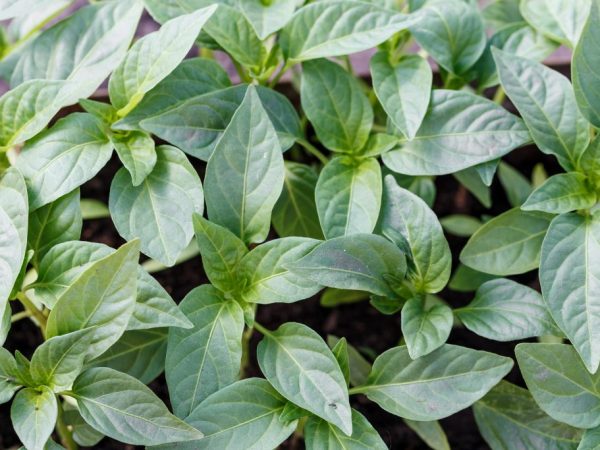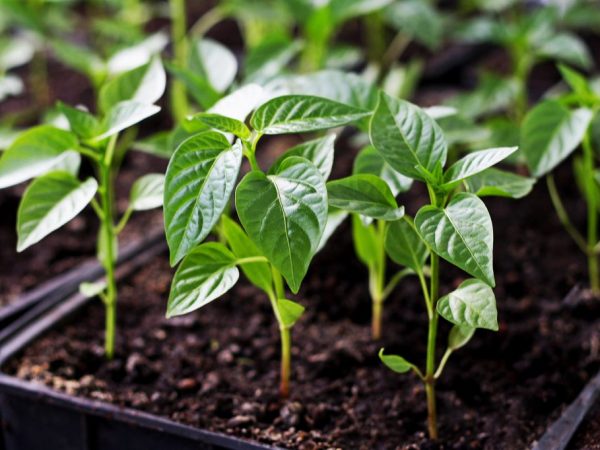Why Pepper Leaves Turn Purple
Pepper is a vegetable crop that has a high rate of disease and weather resistance, but due to inappropriate care during cultivation, different disease symptoms can appear. Purple leaves in peppers are one of the symptoms that indicate errors in agricultural technology.

Purple leaves of peppers
Causes of the problem
Most often, the purple leaves of peppers are formed during early transplantation of seedlings into open ground. This color can change and turn blue. After identifying the lilac color, in order to save the vegetables, it is necessary to regulate the optimal temperature and the amount of fertilizer. The main reasons why pepper leaves can turn purple are:
- Temperature changes. Sharp temperature changes affect the appearance of the bush. Due to the cold weather, the leaves begin to darken, dry and change shape. Later they take on a lilac hue.
- Anthocyanosis. This is a disease of a Bulgarian vegetable, most often growing in a greenhouse. It manifests itself in the form of an atypical lilac color of the bush due to a lack of phosphorus. With its deficiency, seedlings die or degrade.
- Transplant into unfavorable soil. To plant seedlings in open ground, you need to carefully select the soil. It should be filled with sand, ash and fertilizers.
- Disembarkation at the same place. If you plant seedlings in a place that has been used for several productive years in a row, the plant will not produce the required amount of fruit. It can change color and wither due to a lack of trace elements, because they were used by previous cultures.
- Hot weather or dry soil. All this can lead to a change in the color of not only the leaves of the bush, but also the stem. The first to darken are the lower rows of leaves. With a lack of water from the soil, the plant does not receive the necessary nutrition - nutrients do not enter the stem and leaves.
Prophylaxis
To prevent anthocyanosis, diseased seedlings are sprayed with Bordeaux liquid at the rate of 100 g per bucket of water. You can use copper oxychloride: 40 g of the product per 10 liters of water. Purple pepper leaves are a sign of phosphorus deficiency. It is considered an indispensable element necessary for the quality development and growth of the bush. It is the main source of energy for the plant. He controls all metabolic processes in the vegetable.
Phosphorus helps to form juicy fruits on the bushes and activates flowering. It enriches the root system with useful elements. Lack of nutrients also occurs during severe frosts, when the plant begins to freeze. So, the bush is not able to assimilate phosphorus from the soil at temperatures below 15 ° C.
Treatment methods
As soon as the tips of the leaves have acquired a blue tint, they must be treated. There are several methods for this.
Copper spraying
During the growing season, this method is also considered prophylactic. It restores metabolism. For this, 100 g of copper is mixed with 10 liters of water. After dissolution, 1 liter of such a solution is left for each bush. Spray once a season using warm water.Thus, the development of fungal diseases is prevented and the vegetable is provided with a stable metabolism.
Watering, light and feeding

Seedlings need sunlight
To return the green color, the plant needs daily watering, feeding and sunlight for 10-12 hours. If you follow these rules, the bushes will bear stable juicy fruits. The sluggish and dry state of the bushes will not bother you. Such treatments promote good growth and disease resistance.
How to regulate the temperature
During the period of growing pepper in greenhouses, it is necessary to monitor the temperature regime. Temperature fluctuations affect the amount of useful microelements taken from the soil through the root. The bushes turn purple from the cold. They slowly consume phosphorus from the soil. This leads to a change not only in the color of the leaves, but also in the death of the root system.
In cold weather, the bush is covered with a special cloth to keep it warm. Peppers grow slowly due to bad weather conditions. To determine the temperature, use. The optimal indicator during the day varies from 20 ° C to 25 ° C. In the evening, a decrease of 3-6 ° C is allowed.
Don't forget about soil temperature. It should be between 15 ° C and 25 ° C. Any non-compliance with temperature standards leads to rotting, wilting and death of the plant. Due to the low temperature regime, phosphorus starvation occurs.
| room | Agrotechnical measures | Mode of application |
| 1 | Warming with a film at night | At night, the seedlings are covered with additional layers of film. They are placed at a distance of 5-8 cm from the first cover. The air cushion protects the bushes from the frosty air of the environment. |
| 2 | Making a home greenhouse | The basis of the oversized greenhouse, on which the film is thrown, is made from several wooden rods of 4 mm each or wire 3-7 mm. A film with a thickness of more than 0.5 mm is used as a canopy. It is necessary to ventilate such a greenhouse once a day for 10 minutes. |
| 3 | Mulching | The soil is mulched. For this, use a film or spunbond. The non-woven thermally bonded coating not only maintains the temperature inside, but also increases it by 1-2 °. |
Increase the air temperature carefully so as not to burn the vegetable crop. It is recommended to constantly observe the bushes, especially in the first weeks after planting in open ground.
How to feed purple bushes
If the leaves turn purple, the crop lacks feeding. Fertilize the soil before each planting of a seedling in a permanent place. For initial feeding, choose:
- fertilizer of superphosphate at the rate of 600 g per 1 sq. m;
- 200 g of ash per 1 sq. m;
- a bucket of compost on a bush;
- 80 g of potassium sulfate per 1 sq. m.
The next feeding is carried out 20 days after transplanting. A phosphate fertilizer is needed to prevent purple spots on the leaves. The soil is moistened and a solution of carbonite and phosphate is added. To do this, 10 liters of water are mixed with 16 g of carbonite and 4 g of superphosphate.
If the leaves of young seedlings fall off, use a boric acid solution. During the cultivation period, the soil is fertilized 3-4 times every month. Before the plants give buds, a mixture of minerals is used. To prepare 10 g of fertilizers, mix 4-9 liters of water. Each bush accounts for about 100 g of solution.
With a lack of phosphorus, use a strong superphosphate dressing.
A glass of superphosphate is stirred in hot water. The solution is infused for 10 hours and mixed with a bucket of water. For 1 plant, 1 liter of the mixture is used. To carry out foliar feeding, vegetables are treated with a 0.5% phosphorus solution.
Conclusion
Peppers love warmth, sunlight, sufficient moisture and nutritious soil, so it is important to follow all the rules when growing a crop. If the leaves have acquired a purple color, pay attention to the ambient temperature and the amount of fertilizer applied.


